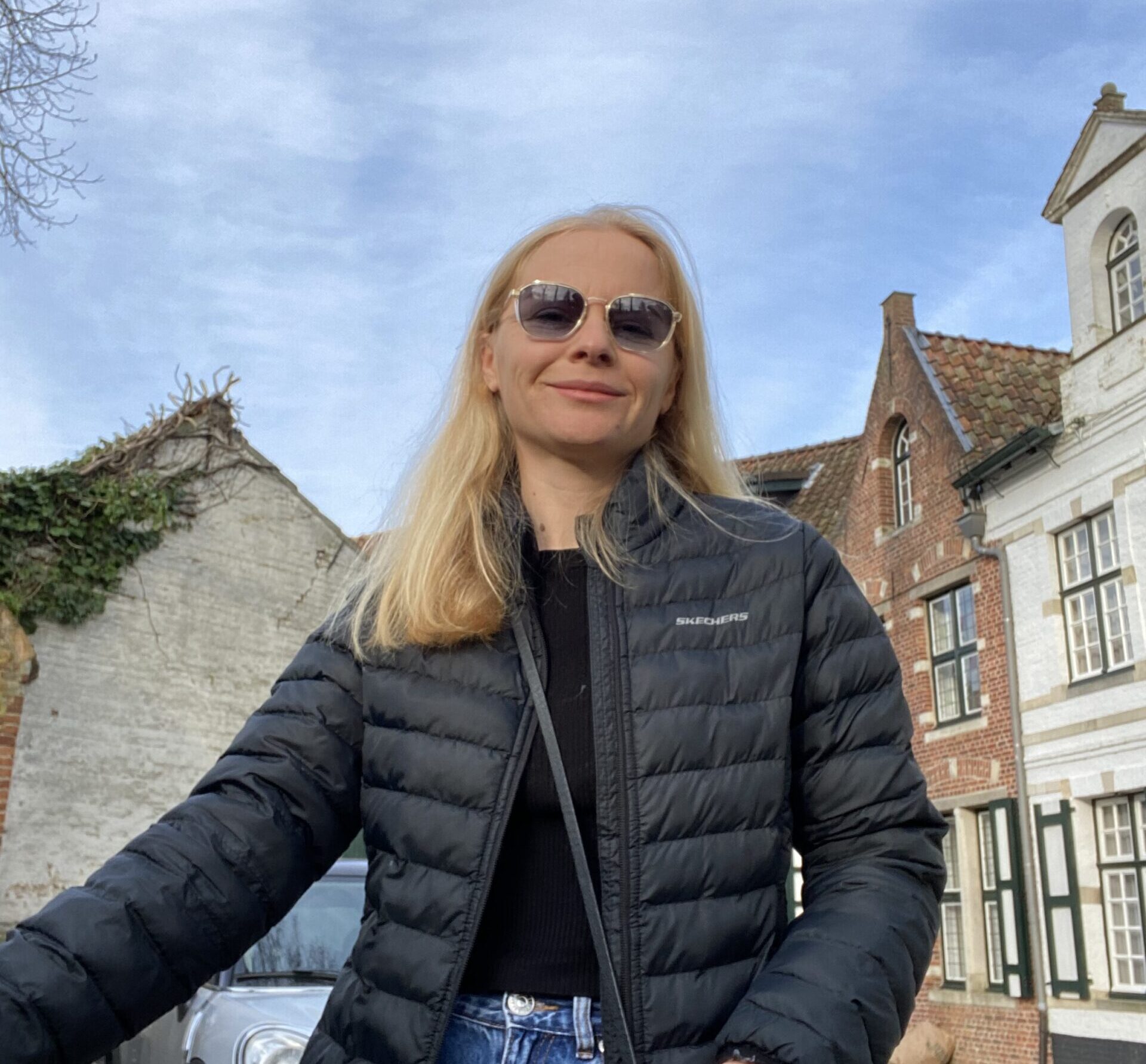Hey there, fellow adventurers
Jewelry Counter Loss Prevention Training
Delany & Co. is a nationwide luxury jeweler specializing in high-quality gemstones, gold, and silver. With Valentine’s Day approaching, theft at jewelry counters often increases as shoplifters exploit the busy retail season. Loss prevention is crucial to protecting inventory and profitability, as theft significantly contributes to shrink.
Learning Outcomes:
- Prevent theft while providing good service.
- Securely handle high-value items.
- Stay alert and respond to threats.
- Identify risks through behavior.
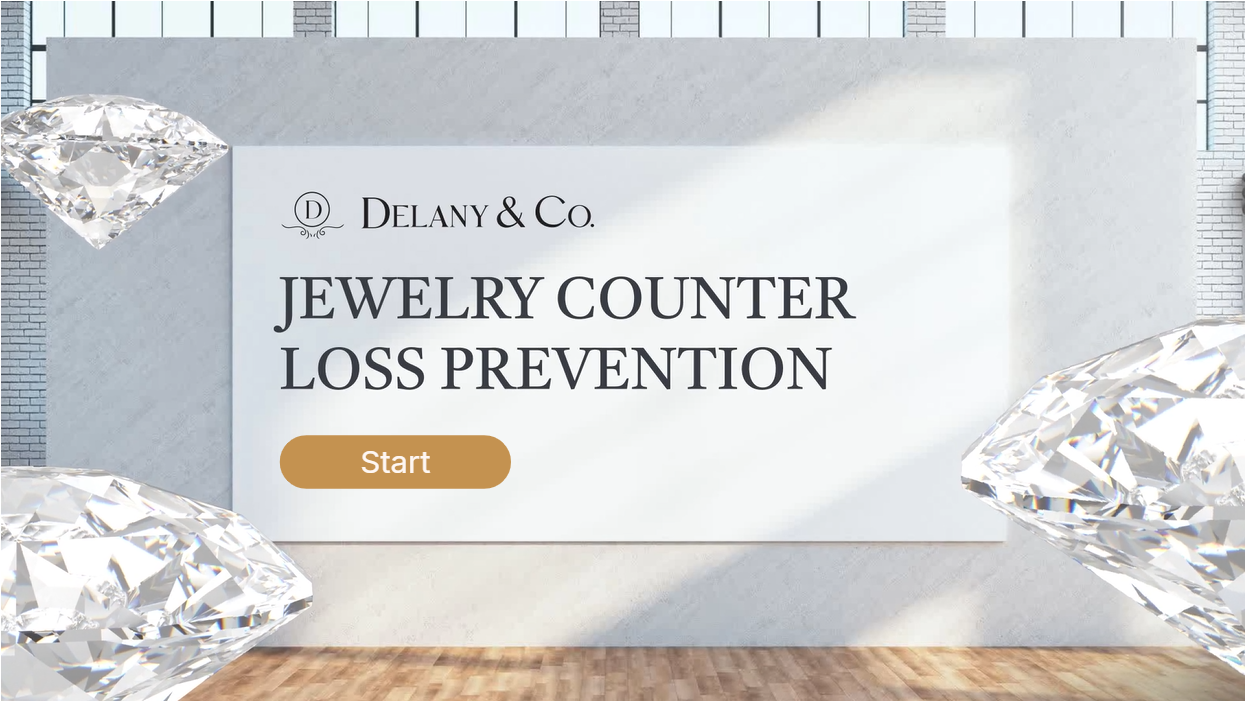
Explore the Jewelry Counter Loss Prevention Training
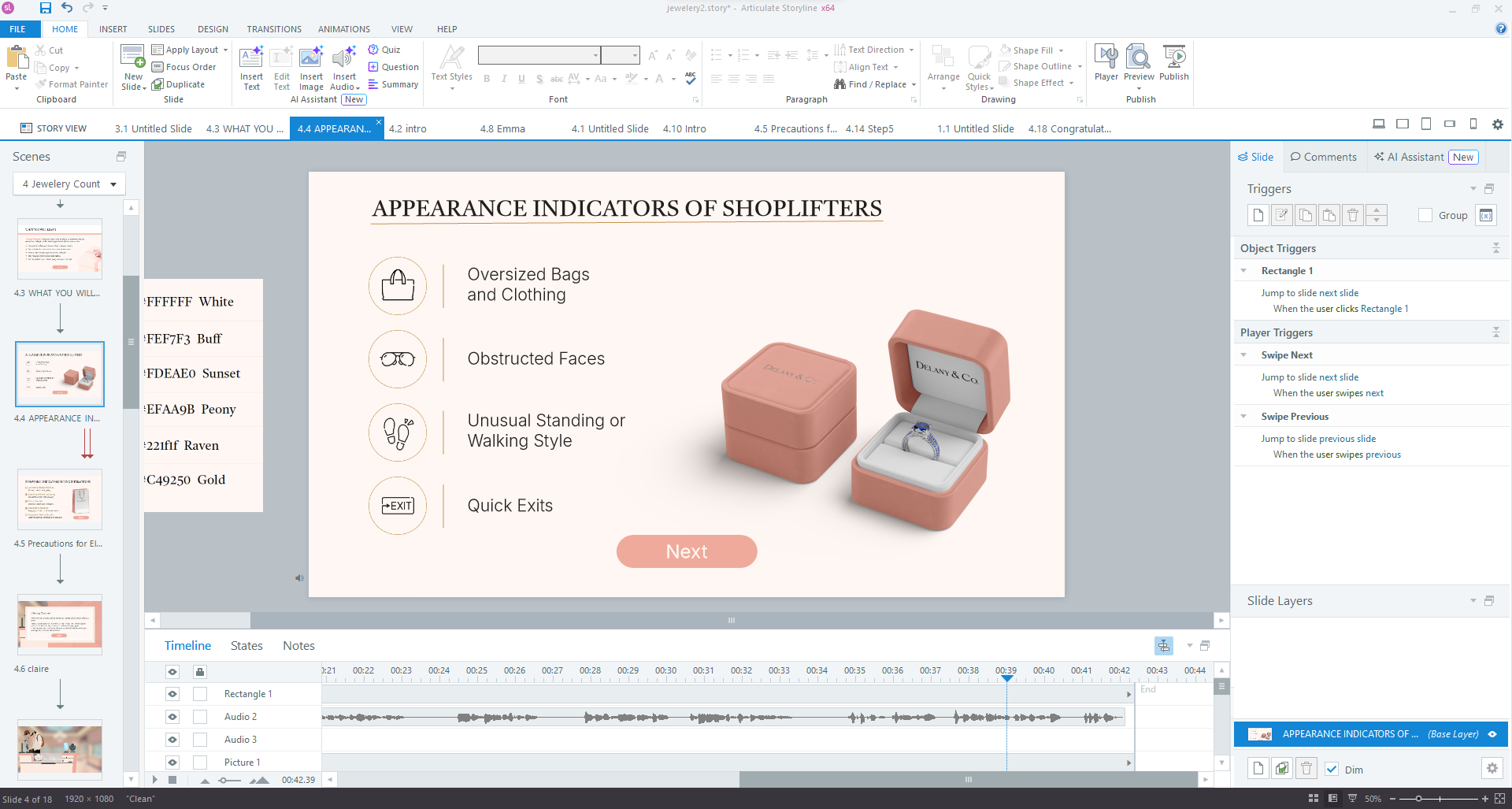
My Notes
About this project
Problem: During the busy Valentine’s Day season, Delany & Co. faces increased jewelry theft as shoplifters exploit distractions, work in groups, or execute grab-and-run thefts, leading to significant inventory loss.
Solution: To reduce theft by 30% in 2025, Delany will train associates to recognize shoplifter behaviors and follow strict security protocols.
Our Process
Gokcenur and I had been wanting to collaborate on a side project for a while, and when we came across the Designers Academy Monthly Challenge for January 2025, we knew it was the perfect opportunity to get started.
First, we defined our roles and quickly structured a plan. Following the ADDIE model, we began with an action map to outline our objectives, then developed a text-based storyboard. As we worked on the content, new ideas emerged, leading us to brainstorm and refine our vision. We then moved on to graphic design, followed by building an interactive prototype, and finally, full development.
Throughout the process, we took on different roles while staying closely connected. We refined our work step by step, exchanged feedback, and made adjustments to ensure the learning experience turned out just as we envisioned.
Action Map
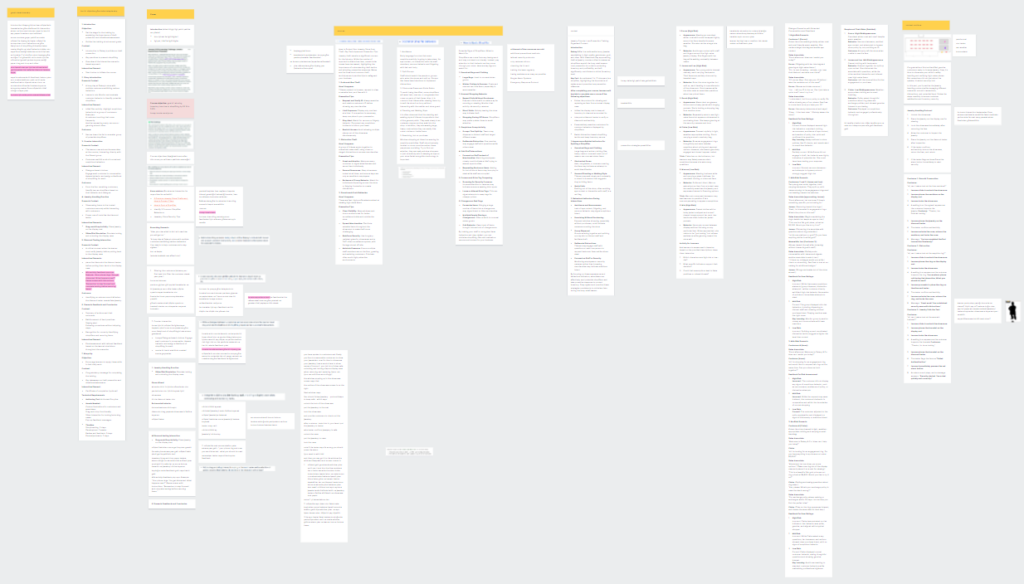
The action map was created based on the problems stated above, as well as the objectives and requirements & constraints outlined in the challenge post.
Following these criteria, we thoroughly reviewed the provided sources to ensure alignment with expectations. Our curriculum was built around three core areas: recognizing customer appearance and behavior, and—most importantly—mastering the jewelry handling protocol.
To ensure learners build awareness before applying their knowledge, we first introduced the challenges they are likely to face, providing a concise overview of key concepts.
Next, we designed an interactive experience where learners would meet a customer and apply what they had learned through direct interaction. The flow of this experience was carefully structured based on the requirements of the e-learning project.
The final structure includes:
- Applying the jewelry handling protocol in a hands-on way to reinforce learning.
- Assessing customers by rating their level of suspicion based on their appearance.
- Engaging in dialogue-based scenarios to interact with them and practice decision-making.
Text-Based Storyboard

The storyboard was written based on the Action Map, ensuring alignment with the challenge requirements. We carefully followed the instructions outlined in the challenge post while structuring the content.
We focused on incorporating dialogues and creating a branching scenario, making the experience more interactive. Since the final product needed to be scenario-driven, we built it around the selected actions in the Action Map to prevent information overload.
The dialogues were crafted to match the characters’ risk levels—low-risk and high-risk customers. Throughout the process, we aimed to maintain a friendly and natural tone to enhance engagement.
Storyboard


Once we were confident that our text-based storyboard provided an engaging, learner-centered experience, we moved on to the visual storyboard. This process was closely integrated with graphic design, allowing us to view each page, compare them, and ensure consistency throughout the project.
Graphic Design

We already had our style guide in place, but we also explored images of jewelry stores for additional inspiration.
One of the most exciting parts of this process was creating the characters with the help of AI—something we were thrilled to experiment with! We were especially happy with how well the characters maintained consistency throughout the project.
To enhance the visuals even further, we incorporated 3D assets for both the cover and end pages, creating a more immersive and visually engaging experience to keep learners actively involved.
Interactive Prototype
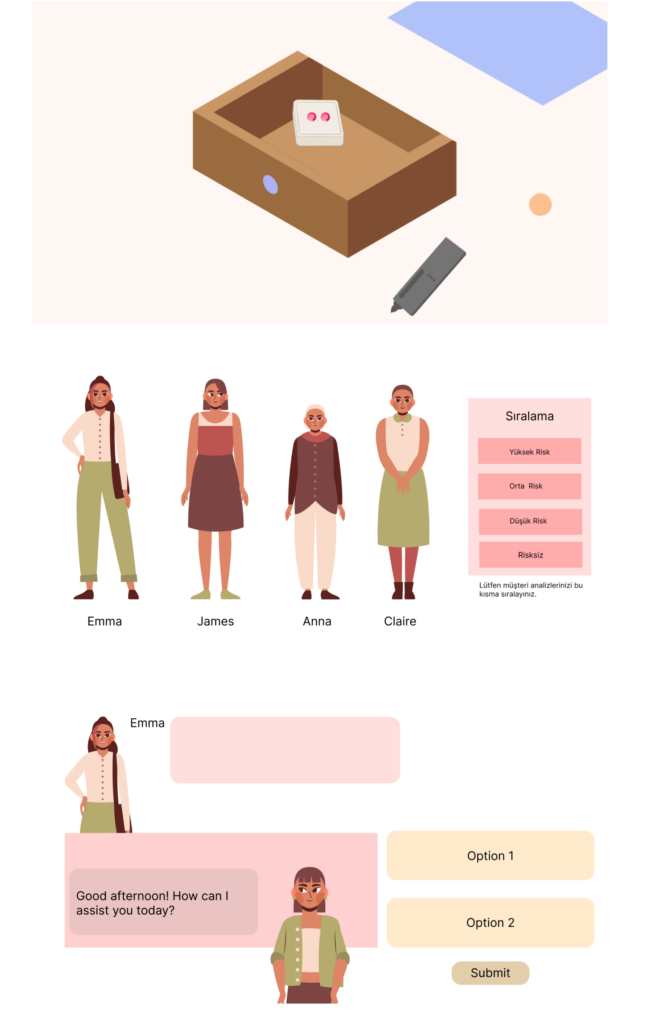
Our first draft was a visual mock-up, but the real challenge began when we had to bring our ideas to life. Our goal was to create a real-world experience that focused on practicing the jewelry handling protocol.
One of the biggest challenges was integrating isometric assets into the jewelry handling protocol challenge. We initially attempted to use drag-and-drop interactions, but they didn’t work well with the isometric design.
We kept refining our approach—translating our ideas into screens and iterating continuously—until we achieved a more realistic and purpose-driven experience. In the end, we believe that teamwork played a key role in helping us get as close as possible to our vision.
Full development
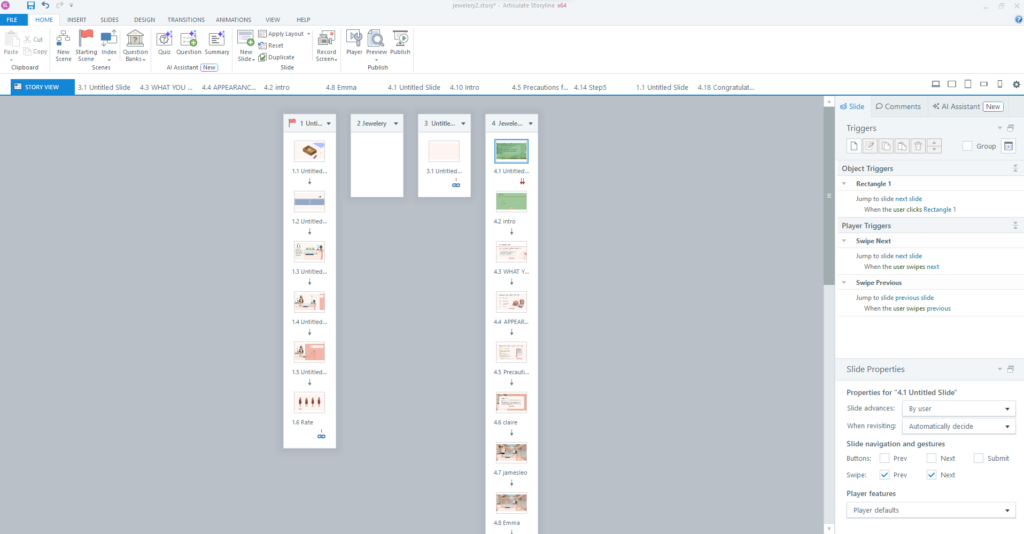
Once I was fully confident in the look and functionality of my prototype, I developed the topic-related slides and scenario-based slides, iterating on them until we felt satisfied. I also made several refinements based on testing and feedback to further enhance the learning experience.
Our biggest challenge was time—we believe that with more of it, we could have incorporated even more features. However, we prioritized what mattered most: meeting the objectives, requirements, and constraints.
Tools
Articulate 360
Adobe Illustrator
Freepik
ChatGPT
Thank you for everything, it was a pleasure working with you on this project, Gökçenur.
– Merve S.
